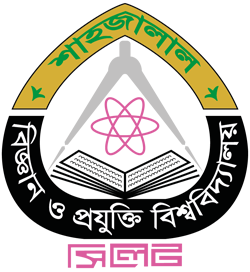Shahjalal University of Science and Technology
-
Overview
-
Academic
- Program
- Admission
- Curriculum
- Student Engagement & Support
-
Research
-
Faculty
-
Student Adviser
-
Former Head
-
Officers
-
Scholarship
-
Activities
-
Announcement
- Notice Board
- News & Events
-
Awards & Honours
- Graduate Student Awards
- Research Awards
- Teaching Awards
- Service Awards
-
Alumni
-
Collaboration
- Academic
- Research
- Student Chapter
-
Contact Us
Research
Department of Electrical and Electronic Engineering (EEE) have the cutting edge technologies Laboratories such as:
• Electronics and Electrical Circuit Labs
• Electrical Machine Labs
• Microprocessor and Embedded System Labs
• Communication, Microwave and Antenna Labs
• VLSI Labs
• Electrical Power System Labs
• Optical Communication Labs
• Electrical & Electronic Circuit Simulation Labs
• Control, Automation and Robotics Labs
• High Performance DSP and Signal Processing Labs
Students have the opportunity to work in these laboratories beyond the course works. Students have the opportunity to work, one-on-one, with faculty researchers in different projects The innovative researches of faculty members are well funded by funding agencies such as: SUST University Research Centre and other Governmental/Non-governmental funding agencies. In addition, students have opportunities to conduct thesis research with participating industry, and university centers and departments.
OPTICAL COMMUNICATION RESEARCH LABORATORY
The Optical Communication Laboratory at SUST engages in research to improve the performance, dependability, and trustworthiness of telecommunications networks. The goals of the Optical Communication Laboratory are to identify, model, simulate, and demonstrate next-generation networking technologies, and to add to the knowledge base for next generation networks; to train tomorrow's network engineering innovators; and to foster industrial collaboration. Our current and recent research projects focus on Microwave photonics and optical signal processing. MWP is the field of immense interest in recent time as it is the only viable solution to meet the future need of real time ultrafast communication overcoming the bottleneck of electronics. The laboratory is equipped with a variety of computers loaded with Opti system 12.0 software. This state-of-the-art software provides the researcher with opportunity to simulate real life scenario of communication engineering in the lab. Apart from the commercial software the optical communication lab also has basic optical communication components like, LASER, photo diode, BERT, high speed oscilloscope, optical fibres, and many more small components. We are in the process of building up the practical components so that it allows us to test the simulation results. Every year students from this lab participate in national and international conferences to present their published papers on the field.
Contact: Hriteshwar Talukder Dept. of EEE
VLSI LABORATORY
A modern VLSI chip is a remarkably complex beast: billions of transistors, millions of logic gates deployed for computation and control, big blocks of memory, embedded blocks of pre-designed functions. How do people manage to design these complicated chips? Answer: a sequence of computer aided design (CAD) tools takes an abstract description of the chip, and refines it step-wise to a final design. The main focus of this teaching and research Laboratory is to make students understand to build his/her own VLSI Circuit, synthesize, verify and implement the design into the target specific device. The laboratory is equipped with high performance computers, CAD Tools: Microwind, Magic VLSI, DSCH, Altera Quartus software. The target device is Altera Cyclone II FPGA device.
Contact: Md. Ishfak Tahmid, Lecturer,Dept. of Electrical and Electronic Engineering
ELECTRICAL MACHINE LABORATORY
It comprises of two modular electric machines training kits. Each kit comprises of single and three phase transformers, various dc machines, single and three phase induction machines and a synchronous machine. Additional hardware includes power supplies with variable and fixed ac/dc, resistive, inductive and capacitive loads, rheostats, changeover switches, dynamometer loading for motors and measurement meters such as digital multimeters, wattmeters, tachometers etc. EQUIPMENT IN THE LABORATORY: The main equipments in the laboratory comprises the following: 1. Universal Power Supply 2. Single Phase Transformer 3. Three Phase Transformer 4. DC Multifunction Machine 5. Single Phase Induction Machine - Capacitor Start/Run 6. Three Phase Squirrel Cage Induction Machine 7. Three Phase Synchronous Machine 8. DC Dynamometer. 9. Switched 3 Phase Resistive Load 10. Switched 3 Phase Capacitive Load 11. Switched 3 Phase Inductive Load
Contact: Dr. Ifte Khairul Amin
Associate Professor
Dept. of Electrical and Electronic Engineering
Email: iftekhar-eee@sust.edu
ELECTRICAL POWER SYSTEM LABORATORY
The Electric Power Systems Lab at Shahjalal University of Science and Technology is a multi-use facility for both research and educational activities. Located on the fourth floor of IICT Building, provides opportunities for faculty and graduate students to perform advanced work in the areas of AC and DC micro-grids, smart grid technologies, power electronic devices and converters. Power system Laboratory comprises of protection, simulation, high voltage and machine related experiments. Facilities are available for Current Transformer, Potential Transformer, overcurrent, undervoltege, directional, differential and distance relays including different numerical relays. Load Flow analysis, Symmetrical Faults, Unsymmetrical Faults, and Power Transmission can be analyzed in this laboratory. The objectives of the Power System Laboratory are to: 1. Educate: Power system issues, especially power quality problems. It provides hands-on learning to supplement classroom theory. 2. Demonstrate: Full scale equipment and metering to allow students and researchers to thoroughly evaluate results of experimentation 3. R&D – Provides an environment for cutting edge electric power systems and technology research, prototyping, development, and demonstration.
ELECTRONICS AND ELECTRICAL CIRCUIT LABORATORY
Electronics and Electrical Circuit Laboratory is a laboratory that explores the design, construction, and debugging of analog and digital electronic circuits. Laboratory research investigates the performance characteristics of Electrical AC/DC Circuits, Resonant Circuits diodes, transistors, JFETs, and op-amps, including the construction of a small audio amplifier and preamplifier. It also has the facility of Circuits and devices used for switching power converters, solid-state motor drives, and power controllers; dc-dc, ac-dc, and dc-ac converters and applications; high-power transistors. It comprises of Analog/ digital oscilloscope, analog/digital trainer board, signal generator, Voltage source and different types of multimeter.
Contact: Nafis Imtiaz
Lecturer
Dept. of Electrical and Electronic Engineering
